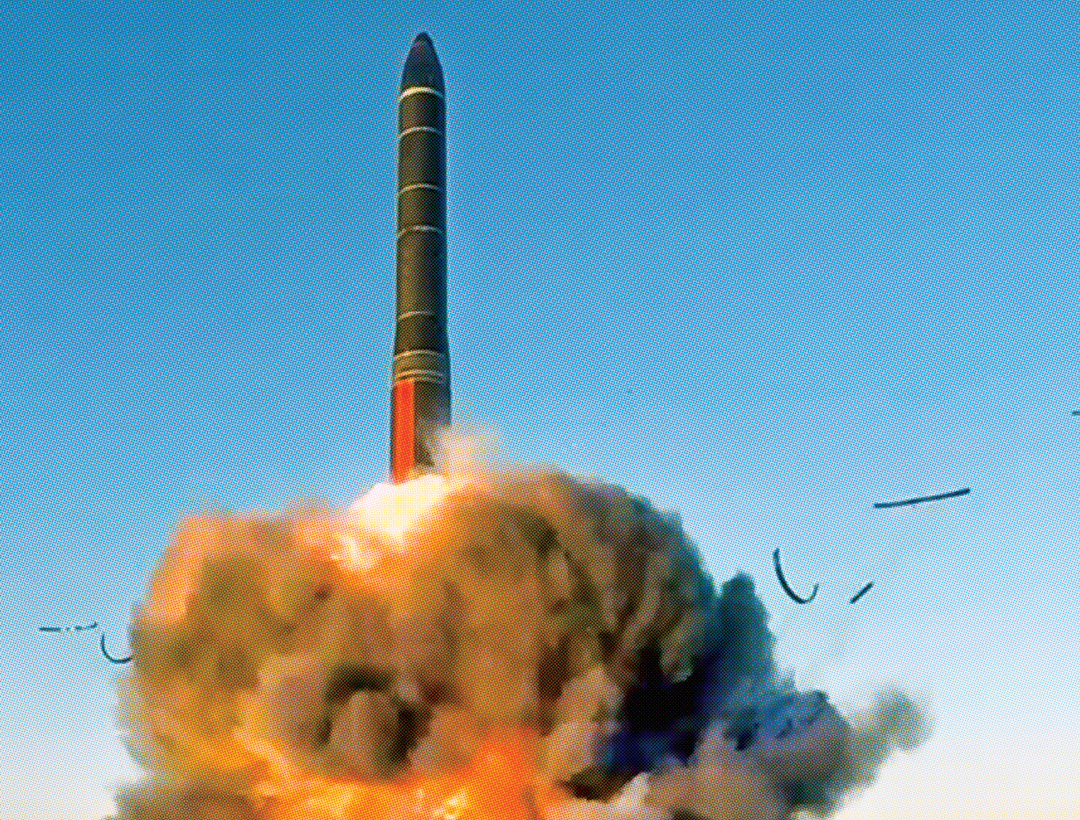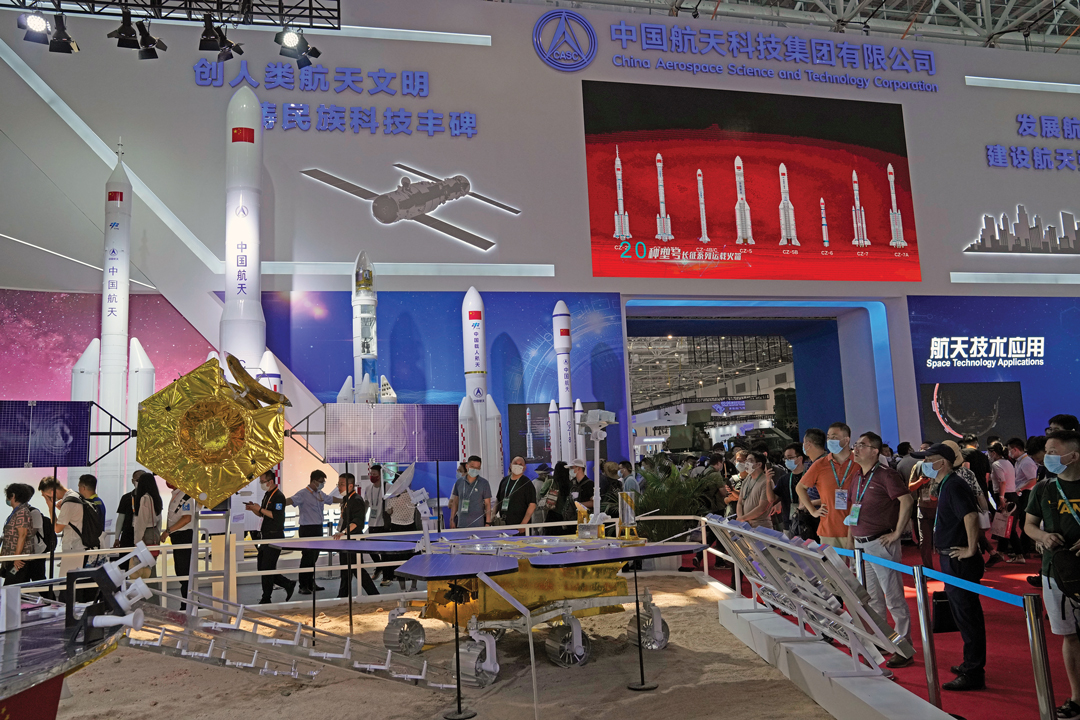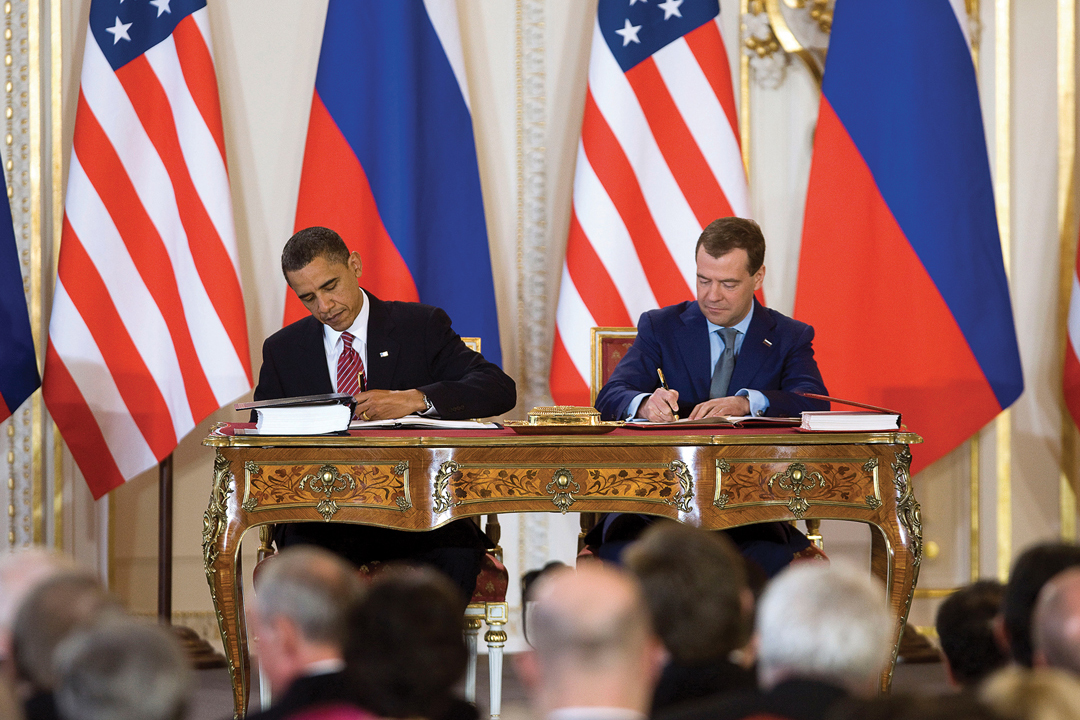By Anna Péczeli, senior fellow, Center for Global Security Research, Lawrence Livermore National Laboratory
During the Cold War, the United States and the Soviet Union accepted strategic stability as a useful tool to manage great power competition and avoid major war. At the heart of the concept was parity in strategic nuclear capabilities. In contrast to this nuclear-centric and bilateral logic, today’s security architecture is more complex. In the current multilateral and multidomain environment, the concept of strategic stability is stretched both horizontally and vertically.
Horizontally, the bilateral logic of the Cold War is no longer applicable since the rise of China means that there are now three great powers that need to find a way to manage their strategic competition. Vertically, the primary challenge is that there is a greater variety of tools — nuclear and non-nuclear — that are able to create strategic effects. The great powers’ increased reliance on emerging and disruptive technologies has created new incentives to compete for strategic advantage, and stability between these states can no longer rest exclusively on strategic nuclear parity. These changes have important implications for the future of arms control, and for the toolkit needed to meet these new realities.
Strategic Stability and Arms Control
As the Cold War continued, the U.S. and the Soviet Union came to the realization that mutual vulnerability was inescapable, and that the arms race alone could not provide the desired security benefits. This feeling of mutual vulnerability and fears over a surprise attack from the other side eventually led the great powers to pursue strategic stability and put limits on the most destabilizing weapons and behaviors. The term “strategic stability” was originally used as a guidance to avoid war by ensuring that both sides had the ability to respond in case the adversary attempted a disarming first strike. This early interpretation of strategic stability came to be known as first-strike stability. Over time, other interpretations emerged. Crisis stability was understood as a slightly broader term, referring to the lack of incentives to use any form of military power first in a crisis. While first-strike stability emphasized the need to increase the survivability of nuclear forces and their support structures, crisis stability focused on reducing escalatory pressures in a conflict. The third interpretation of strategic stability was arms race stability, which meant that neither side could improve their position relative to the other side by simply building up nuclear forces. Pursuing these goals simultaneously set clear limits to the strategic competition in the Cold War, put a cap on the most destabilizing capabilities, led to actual force reductions and created crisis management tools designed to avoid unintended escalation based on miscalculation and misunderstandings.

Following the above logic, Cold War-era arms control negotiations between the U.S. and the Soviet Union primarily focused on capabilities that affected strategic stability. As a result, several treaties were concluded between Washington and Moscow that limited their nuclear weapons and missile defense capabilities. These agreements enhanced first-strike stability by eliminating incentives for a disarming first strike by shaping the structure of forces and limiting the capabilities that increased relative vulnerabilities. Crisis stability was reinforced not only by reducing the urgency to preempt, but also by reducing the likelihood of strategic surprise and miscalculations through increased transparency and predictability, and by establishing lines of communication and debate-resolution mechanisms. Arms control also enhanced arms race stability by placing qualitative and quantitative limits on certain capabilities to avoid action-reaction military buildups and reduce the likelihood of achieving military dominance by either side.
The Challenges of Multipolarity
In the post-Cold War era, the application of the above principles is problematic for several reasons. The first set of issues is related to the changes in the global power structure. The shift from a bipolar security architecture to a multipolar environment means that strategic stability is no longer a bilateral business between Washington and Moscow. China’s growing role in international relations and its nuclear buildup have become important factors in U.S. and Russian force structure decisions, as well as their thinking about strategic stability and arms control.
So far, China has not been transparent about its force expansion, and it has refused to join any arms control or strategic stability discussions, despite repeated U.S. invitations. In fact, China is very skeptical about using Cold War terms and logic to define its relationship with Washington. China has been demanding an official U.S. recognition of mutual vulnerability, and it believes that the U.S. rejection of such a statement is indicative of Washington’s desire to pursue absolute security. The one instance where China applies the logic of the Cold War is in its claim that a strategic stability relationship only makes sense among nuclear equals, thus it has no role to play in its relationship with the U.S. Beijing believes that U.S. engagement efforts are primarily aimed at capping China’s military modernizations and locking in its vulnerabilities vis-à-vis the U.S.

China argues that because the U.S. and Russia possess over 90% of global nuclear forces, it is their responsibility to continue the arms control process bilaterally. China is also skeptical about transparency measures, claiming that they are a trick to exploit vulnerabilities in an asymmetric relationship. According to Beijing, the U.S. is the one that generates instability in the Asia-Pacific region, thus it falls on Washington to implement greater transparency and take measures to reduce the chances of misunderstandings in a crisis. In light of these concerns, it is not likely that China will join formal arms control efforts anytime soon. The conclusion that arms control is only used as a plot by the U.S. to constrain adversaries is a widely held belief among Chinese political and military elites.
China’s rise to great power status and the challenge of multipolarity has two important implications for the future of arms control. First, in order to continue the arms control process, the U.S., which remains committed to restoring its leadership in this arena, has to find incentives to bring its adversaries to the table. While China is a strong skeptic of the process, Russia has a poor track record of compliance with its arms control obligations — the U.S. State Department has officially accused Moscow of violating almost every arms control agreement over the past 10 years — and it remains reluctant to join a new round of talks unless the two other NATO nuclear powers (the United Kingdom and France) also join. In addition to the lack of willingness to engage, the deep-seated mistrust in both directions makes it extremely challenging to put forward any arms control proposal. Bilateral relations are at their lowest point with Russia since the end of the Cold War, and all sides tend to operate under worst-case assumptions about the other’s intentions. So far, little constructive thinking has taken place about incentives either through rewards or punishment. For Washington to overcome these difficulties, it will be important to coordinate with allies and discuss what they are willing to put on the table in exchange for Russian and Chinese constraints on their arsenals, and what specific benefits they want to achieve through arms control.
The second important implication of multipolarity is the increased complexity of the negotiating process, which might force the U.S. to make more compromises and agree to fewer comprehensive agreements. The U.S., Russia and China have very different force structures, which makes it difficult to conclude agreements similar to the SALT or START treaties. This could lead to concessions on both the scope and the verification mechanisms of future agreements. Furthermore, in a multilateral negotiating process, Russia and China could team up against the U.S. to extort an unfair deal that would provide asymmetric benefits to them.
The Challenges of the Growing Toolkit
Besides the growth in the number of great powers, there is considerable growth in the number of tools that can inflict strategic effects. While parity in strategic nuclear capabilities was used to define the Cold War understanding of strategic stability, the strategic postures of the U.S., Russia and China are increasingly reliant on concepts and capabilities in different operating domains. In and of itself, the idea of multidomain warfare is not new. What is new is the growing number of capabilities that are powerful enough to trigger nuclear escalation.

Thus, in addition to the size of nuclear arsenals, today’s strategic competition is also defined by a race to develop a range of emerging and disruptive technologies (EDTs), such as missile defenses, long-range conventional strike weapons, cyber and counterspace capabilities. These new capabilities blur the lines between nuclear and conventional warfighting doctrines, and blend nuclear, space, cyber and conventional concepts. The complexity of this multidomain strategic environment also makes it more difficult to distinguish between stability and instability.
The literature on emerging and disruptive technologies suggests that strategic stability can be both strengthened and undermined by these new capabilities. On the one hand, first-strike stability could be supported because EDTs make a disarming first strike more difficult to accomplish in the face of a greater variety of strategic tools. A bigger toolkit also means that retaliation is more likely after a first strike. EDTs can also increase the survivability of forces and enhance the efficiency of command and control (C2) systems, making a surprise attack less likely to succeed. On the other hand, EDTs could also undermine stability by increasing the speed and accuracy of attacks, which could make preemption more tempting to military and political leaders.
The crisis stability benefits of EDTs include a higher credibility to threats under the nuclear threshold due to the increased number of military options, and improvements in intelligence, surveillance and reconnaissance (ISR). This reduces escalatory dangers because it makes enemy risk calculus more difficult. Improved ISR also reduces the chances of misunderstandings by feeding better information into the decision-making process and helping to create more direct channels of communication between world leaders. At the same time, crisis stability can be undermined by these new technologies because the increased speed of warfare (hypersonic weapons, for example) significantly reduces decision times to detect an attack, deliberate and respond. The shrinking timeframe to consult and deliberate makes it more likely that information cannot be verified and that mistakes will be made. It also creates incentives to reduce human control and automate certain processes. This creates a need for reliable and accurate information, opening new vulnerabilities for information manipulation by adversaries.
In terms of arms race stability, optimists use Cold War logic and argue that the new vulnerabilities created by EDTs are going to force the great powers to the negotiating table once they recognize that mutual vulnerability is inescapable. First-comer advantages in these new domains are likely to be short-lived and once the great powers catch up to each other or develop countermeasures, arms-racing incentives will be reduced. At the same time, instabilities could grow because some EDTs provide such a significant military advantage to the first to deploy a new technology (quantum computing, for example) that the promise of battlefield advantages will continue to incentivize the great powers to compete. As long as the U.S., Russia and China judge that the benefits of these emerging technologies outweigh the risks of competition, they will not pursue mutual restraint and arms control measures in the new domains. Because of these conflicting dynamics, the future of strategic stability and arms control will largely depend on how the great powers apply these technologies, and it is very likely that elements of cooperation and competition will coexist in some form.
There are two additional implications of this multidomain environment. First, the traditional concept of strategic stability needs to be revisited. In light of the growing significance of these new technologies, it is clear that the strategic balance between the U.S., Russia and China is no longer exclusively defined by nuclear weapons. While parity in strategic nuclear capabilities remains a desired goal between the U.S. and Russia, stability will also depend on the balance of these new nonnuclear strategic systems. Moscow has long argued that there are growing instabilities between the U.S. and Russia due to U.S. developments in missile defense and conventional precision-strike capabilities. They have repeatedly accused the U.S. of pursuing unilateral domination and a disarming first-strike capability. Thus, the Russian approach to strategic stability has expanded to include nuclear weapons, conventional precision-strike capabilities, missile defense, and EDTs in the cyber and space domains. Information warfare and broader political factors also influence Russia’s strategic stability relationship with the U.S.
On the Chinese side, there is a similarly broad understanding that military balance is not primarily defined by quantitative factors; it is the qualitative relationship that actually matters. It is also unclear to what extent Russian and Chinese modernization efforts have been motivated by a desire to restore strategic stability. Both states argue that their military buildup was motivated by U.S. advancements in missile defense and conventional precision-strike capabilities, but in reality they have come a long way from just “restoring” the status quo ante — especially considering their advancements in directed energy and counterspace weapons. It seems that rather than strategic stability considerations, their modernization efforts were primarily motivated by pursuing disrupting advantages, which makes it very unlikely that they are ready for arms control measures in the new domains. While certain U.S. force structure decisions are still guided by a desire to maintain strategic stability, in practice this notion has only constrained U.S. modernization programs, not the Russian or Chinese efforts.
The dialogue between these great powers is further complicated by the fact that the U.S., Russia and China have different interpretations of the military utility of the new domains, and they have developed different concepts for warfighting and escalation control. For example, while Russia and China consider information warfare to be a critical tool to shape the political environment not just in a conflict but also in peacetime, the U.S. still primarily uses cyber tools in a tactical way, as part of signals intelligence.
The second important implication of the multidomain environment that arms control will need to account for is the growing number of qualitative and quantitative asymmetries. Outside of the U.S.-Russia de facto parity in strategic nuclear forces, there are huge asymmetries in the force structure of the great powers. Past arms control measures offer three distinct options to address this problem. First, asymmetry of reductions, which means that the signatories agree to the same limit, but in practice, the implementation requires greater reductions from one side. Second, asymmetry of ceilings, which means that the signatories limit similar capabilities at different levels. And third, asymmetry of domains, which means that the signatories agree to similar limitations but in different domains and capabilities. Due to their flexibility, these mechanisms are likely to play an increased role in future arms control negotiations, but handling these growing asymmetries also creates a lot of difficult challenges for trade-offs, counting rules and verification.

Implications for Arms Control
The U.S. has long tried to discuss strategic stability with Russia and China. The official Strategic Stability Dialogue (SSD) framework offers an opportunity for the great powers to discuss the fundamentals of their strategic relationship, and to talk about arms control, threat perceptions, red lines and the rules of the game. Besides the high-level dialogue, it also offers the option of more in-depth discussions on certain topics in a working group format. For many years, the U.S. has been trying to get China more involved in these discussions, but Beijing has repeatedly refused to engage on the topic of strategic stability at a meaningful level. Although U.S.-Russian SSD talks occasionally take place, they have been sporadic and unproductive. Considering the horizontal and vertical expansion of strategic stability, it seems that a new approach is needed. The desire by Russia and China to compete in the new domains has created a number of military advantages that are likely to require a competitive response from the U.S. and its allies — especially in the space and cyber domains. However, this does not mean that stability can only be restored through competition.
The U.S. and its allies need to talk about the norms and the format of restraint in areas where Russia and China might show a willingness to engage in risk reduction and arms control talks. A few basic principles are still valid for future strategic stability engagement. First, stability only makes sense if it includes some kind of equilibrium, or some degree of mutual restraint. Second, the Cold War logic of mutual vulnerability is still crucial for the 21st century strategic stability concept. And third, some kind of structured mechanism is needed to bring the great powers together to formally engage on strategic stability topics. Advancing these principles will be difficult, and it will also require an acknowledgement of the link between arms control and deterrence, as well as between cooperation and competition.
Regarding the arms control toolkit, the bottom line is that strategic arms control can no longer be just bilateral or nuclear. The negotiating framework and the verification mechanisms will need to adjust to a multilateral and multidomain environment. Many of the new domains resist effective verification based on counting rules or traditional measures, such as on-site inspections. Furthermore, most new technologies are dual-purpose and dual-use, which means that a blanket ban is unlikely to work. Instead, future arms control mechanisms will need to focus on limiting certain applications and certain behaviors. Negotiations and verification tools also need to account for the fact that many of these new military assets and much of the knowhow are held by the private sector, which means that enforcement will be more difficult and complex. There are many areas where traditional, legally binding arms control measures will be difficult to achieve. Instead of focusing on quantitative reductions in a single weapons category, it might be more feasible to focus on behavioral limits and setting norms and best practices. In terms of less formal arms control measures, negotiations should focus on discussing the most likely pathways to nuclear use, understanding the adversary’s thresholds and preventing unintended escalation. Informal arms control measures also have the added benefit of a faster negotiation process, an important advantage in this fast-paced strategic environment. However, for any of these mechanisms to work, the great powers will need to show a political willingness to engage, and the leadership to put proposals on the table and carry on with the process.
This work was performed under the auspices of the U.S. Department of Energy by Lawrence Livermore National Laboratory. The views and opinions of the author do not necessarily reflect those of the U.S. government or Lawrence Livermore National Laboratory.


Comments are closed.